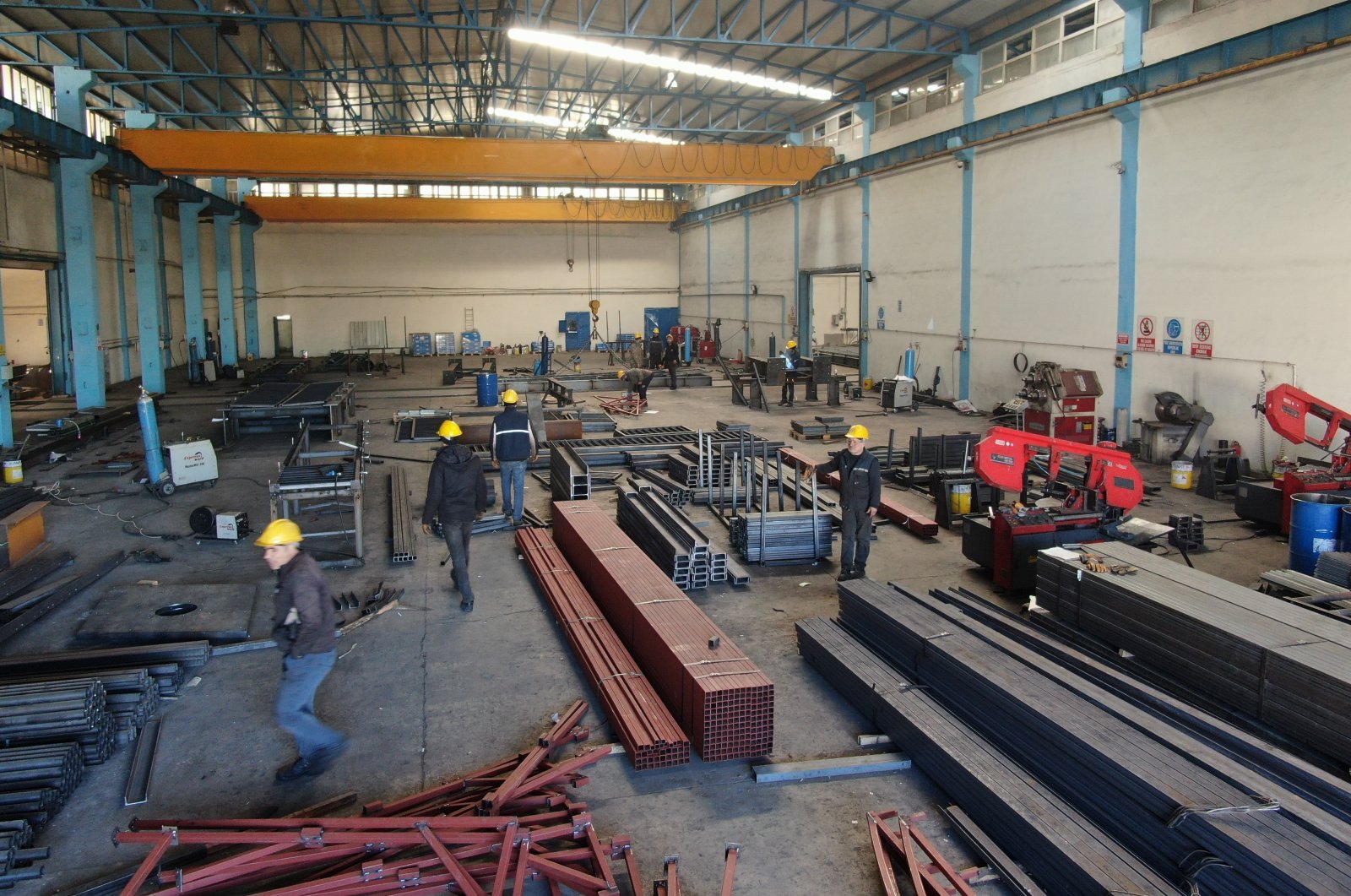
Following last month’s earthquakes, one of the top priorities for Türkiye has been to keep the factory wheels turning in various critical fields, alongside investments in technologies such as AI, cloud, IoT and robotics that have been brought up
Türkiye has been engaged in a swift campaign to try to heal the wounds rapidly after last month’s catastrophic earthquakes that ripped through the southeastern region, halting production in many crucial sectors, from textile and packaging to food and basic raw materials.
The Feb. 6 quakes and strong aftershocks killed more than 46,000 people and destroyed or severely damaged over 230,000 buildings, leaving hundreds of thousands of people homeless, making it the worst disaster in Türkiye’s modern history.
Ensuring that blue and white-collar workers remain in the cities affected by the quakes and continue production has been among the top priorities.
The importance of prioritizing technology investments has once again come forward, spearheaded by initiatives engaged in artificial intelligence (AI), cloud, Internet of Things (IoT) and Industry 4.0.
Companies whose production facilities were not severely damaged initially focused on solving employee problems, before trying to renew technology investments that would provide error-free and continuous production.
Post-disaster recovery has also been marked by steps taken to revitalize production by matching organized industrial zones with technology parks.
Digital twin projects
Efforts are being taken to implement technology-oriented solutions of technoparks parks and technology ventures quickly.
One of Türkiye’s leading technology and communications companies, Türk Telekom is putting forth projects to implement 5G solutions through cooperation with giant industrial organizations such as Arçelik, a prominent home appliance maker.
Meanwhile, a recent survey on digital twin software projects suggested significant growth and strong adoption.
The Digital Twin Market Report 2023-2027, unveiled by IoT Analytics, focuses particularly on production technologies and details the digital twin market, including definition and uncertainty resolution, standardization efforts, market size and outlook, competition environment, market points, case studies, trends and developments.
Production companies in Türkiye’s earthquake zone are still trying to take the first steps in digitalization. As for the world in general, digital twin applications are still quite new.
The report emphasizes the research findings of 100 digital twin projects. The market for standalone digital twin software grew 71% between 2020 and 2022, it suggested.
It also stated that about 29% of manufacturing companies globally have fully implemented or are implementing a digital twin strategy for a portion of their operational assets, and a further 63% are currently developing or have already developed their digital twin strategy.
The report highlights the six main digital twin applications today: system prediction, system simulation, asset interoperability, maintenance, system visualization and product simulation.
Started with space research
The roots of digital twins go back to NASA’s Apollo program in 1970, but the concept of creating digital replicas of physical assets and visualizing, simulating or predicting in a virtual world is still to gain widespread adoption.
The concept is extremely suitable for companies that are trying to make Industry 4.0 a reality or are aiming toward future industrial metaverse projects. It also aims to target future industrial Web 3.0 projects.
Although the definition of a digital twin may be straightforward, its applications are numerous.
Implementing 13 projects
Meanwhile, Arçelik, Nokia and Türk Telekom launched the 5G@EndTech program, aimed at encouraging solutions that will increase productivity, cost and safety in the manufacturing industry using 5G technology.
The 5G@EndTech was launched under the auspices of the Industry and Technology Ministry and with the support of the Presidential Investment Office, the Small and Medium Enterprises Development and Support Administration (KOSGEB) and the Scientific and Technological Research Council of Türkiye's (TÜBITAK) Turkish Management Sciences Institute (TÜSSIDE).
Thirteen projects have been developed with technology companies within the scope of the program so far.
Now, an important process is underway to rapidly implement the solutions of the initiatives emerging from the program.
At the Demo Day held at Arçelik Çayırova Campus Garage Innovation Hub, the 13 technology companies that participated in the program exhibited their field studies.
These included an AI-supported autonomous drone with 5G connectivity that can detect security risks on the campus and a robot that can detect and report negative health and safety issues with image processing.
They also featured a sightseeing robot with the ability to make autonomous virtual factory tours using 5G infrastructure and industrial solutions that can perform predictive maintenance with 5G and/or replace traditional wired systems.
